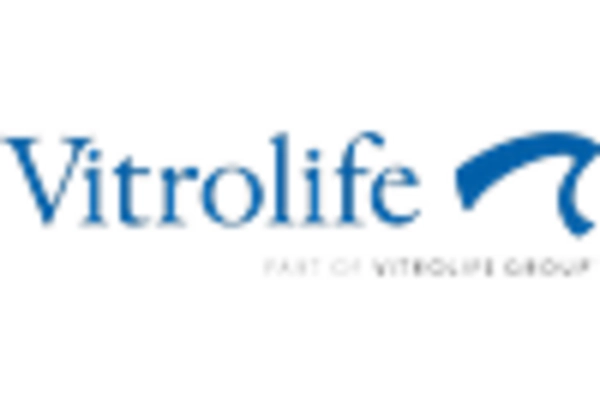Rising Infertility Rates
The IVF Time-Lapse Imaging Device Market is significantly influenced by the rising rates of infertility across various demographics. Factors such as delayed childbearing, lifestyle changes, and environmental influences contribute to this trend. Recent statistics indicate that infertility affects approximately 15% of couples worldwide, leading to an increased demand for assisted reproductive technologies. As more individuals seek IVF treatments, the need for advanced imaging devices becomes paramount. The IVF Time-Lapse Imaging Device Market is poised for growth as clinics strive to offer the best possible care, utilizing time-lapse imaging to enhance embryo selection and improve overall success rates.
Patient-Centric Approaches
The IVF Time-Lapse Imaging Device Market is increasingly shaped by patient-centric approaches that prioritize personalized care and transparency. Patients are becoming more informed and involved in their treatment decisions, leading to a demand for technologies that provide clear insights into their reproductive health. Time-lapse imaging devices offer detailed visualizations of embryo development, allowing patients to understand their treatment progress better. This shift towards patient empowerment is likely to drive the adoption of advanced imaging technologies in IVF clinics. As a result, the IVF Time-Lapse Imaging Device Market may experience growth as clinics respond to the evolving expectations of patients seeking more comprehensive and engaging fertility treatments.
Technological Advancements in Imaging
The IVF Time-Lapse Imaging Device Market is experiencing a surge in technological advancements that enhance the precision and efficiency of embryo monitoring. Innovations such as high-resolution imaging and automated analysis tools are becoming increasingly prevalent. These advancements allow for real-time monitoring of embryo development, which is crucial for improving success rates in IVF procedures. According to recent data, the integration of advanced imaging technologies has been linked to a 20% increase in successful implantation rates. As clinics adopt these cutting-edge devices, the IVF Time-Lapse Imaging Device Market is likely to expand, driven by the demand for improved outcomes and patient satisfaction.
Increased Investment in Fertility Clinics
The IVF Time-Lapse Imaging Device Market is benefiting from increased investment in fertility clinics and reproductive health services. As awareness of infertility issues grows, private and public sectors are channeling funds into the establishment and expansion of fertility centers. This influx of capital enables clinics to acquire state-of-the-art technologies, including time-lapse imaging devices. Recent reports suggest that the fertility services market is projected to grow at a compound annual growth rate of 10% over the next five years. Consequently, the IVF Time-Lapse Imaging Device Market is likely to see a corresponding rise in demand as clinics enhance their service offerings to attract more patients.
Regulatory Support for Advanced Technologies
The IVF Time-Lapse Imaging Device Market is positively impacted by regulatory support aimed at promoting the use of advanced reproductive technologies. Regulatory bodies are increasingly recognizing the importance of innovative solutions in improving IVF outcomes. This support often translates into streamlined approval processes for new devices and technologies, encouraging manufacturers to invest in research and development. As regulations evolve to accommodate advancements in imaging technology, the IVF Time-Lapse Imaging Device Market is likely to benefit from a more favorable environment for innovation. This could lead to a wider array of options for clinics and patients, ultimately enhancing the overall effectiveness of IVF treatments.


















Leave a Comment